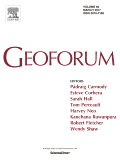A new research project with Dr Phil Renforth (Cardiff University) has been highlighted in The Guardian. You can read the full article here.
This new three-year project, which has just been awarded a £300,000 grant by the Natural Environment Research Council (NERC), aims to to test the feasibility of using iron and steel slag deposits to remove carbon dioxide from the atmosphere and it is set to begin in Consett, County Durham, and Port Talbot, south Wales.
During the process of steel-making, iron ore is mixed with limestone or dolomite and heated to extremely high temperatures. The end results are steel and slag, a waste mixture of calcium and magnesium silicates and oxides. Piles of this ore-processing leftover have been dumped around the countryside over several centuries.
“Often these heaps have been landscaped very nicely,” said Renforth, who has worked on the project with Will Mayes of Hull University. “There is one in Consett that has been turned into lovely parkland where people can walk their dogs. They are all round the country. Wherever we have made iron, we have left a pile of slag.”
Earlier research by Renforth has shown that carbon dioxide from the atmosphere is absorbed by material inside slag heaps. “We now want to see if we can improve the rate of this absorption so that can we make significant reductions in atmospheric levels of carbon dioxide in the future,” added Renforth.
To do this, Renforth’s project will proceed in two stages. “First, we will drill into one of these old, historic slag heaps and see what has been happening there over the years and understand what chemical processes have been going on as rainwater has brought carbon dioxide into the heap.
“And then we will start the second stage. We will create our own mini-heap – about the size of a skip – and play with its chemistry to try to optimise its ability to sequester carbon from the atmosphere.” These slag-based carbon sequestrators could then be used as models of larger devices that could reduce carbon levels in the atmosphere, Renforth added.
The UK produces 3-4m tonnes of slag a year while the total global production is estimated as being about 500m tonnes a year at present. However, this rate could increase as developing nations catch up, added Renforth. “Our calculations suggest that we might produce between 100bn and 200bn tonnes of slag cumulatively by the end of this century,” added Renforth. “That has the potential to remove 50-100bn tonnes of carbon from the atmosphere, we believe.”
